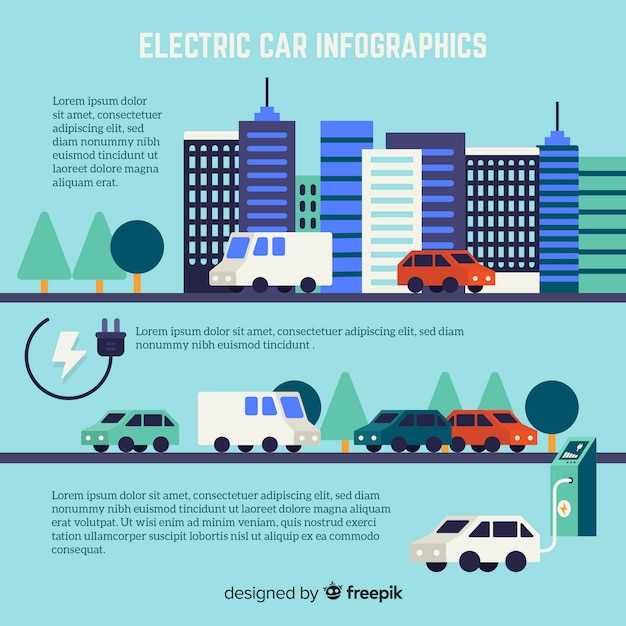
As the world grapples with the challenges of climate change and urban pollution, cities are increasingly becoming the focal points for a transformative shift in transport. The rise of electric vehicles (EVs) has gained significant momentum, driven by innovations in technology, supportive government policies, and a growing public demand for sustainable modes of transportation. These cities are not merely adopting EVs; they are actively shaping the future of how people and goods move in urban environments.
Global metropolises like Amsterdam, Oslo, and San Francisco are leading the charge, implementing comprehensive strategies to encourage the use of electric vehicles. These initiatives range from expanding electric charging infrastructure to offering incentives for EV ownership, thereby reducing the carbon footprint of urban transport. By prioritizing the adoption of EVs, these cities are not only enhancing air quality but also improving public health and contributing to a more sustainable urban ecosystem.
The transition to electric vehicles is not just about individual choices; it’s about creating an interconnected system that integrates advanced technologies, policies, and community engagement. As these pioneering cities demonstrate, the path to a sustainable future in transport hinges on active participation from both residents and local governments. This article will explore key examples of cities that stand at the forefront of the electric vehicle revolution, examining their strategies and the impact they are making on the urban landscape and beyond.
Infrastructure Investments in Charging Stations
As cities around the world embrace the electric vehicle (EV) revolution, the importance of robust infrastructure investments in charging stations has become increasingly evident. These investments are crucial for facilitating the widespread adoption of EVs and achieving sustainable urban mobility.
Cities that prioritize the development of charging infrastructure not only enhance the accessibility of electric vehicles but also contribute to lowering carbon emissions. Comprehensive charging networks enable EV users to recharge their vehicles efficiently, thereby addressing range anxiety–a major concern for potential electric vehicle owners.
Investment in charging stations involves a multifaceted approach. Municipalities are collaborating with private companies to deploy fast chargers, which can significantly reduce charging times and make EV usage more convenient. Furthermore, integrating charging stations into existing urban infrastructure, such as parking lots and public transportation hubs, maximizes their utility and encourages more residents to transition to electric mobility.
Moreover, sustainable energy solutions are often included in these infrastructure projects, such as solar-powered charging stations. This not only decreases dependence on fossil fuels but also further promotes the shift towards a greener, more sustainable urban environment.
By fostering partnerships and investing in advanced technology, cities can create a resilient framework that supports the expanding infrastructure needed for electric vehicles. This, in turn, will pave the way for a cleaner and more efficient transportation system, underscoring the critical role of charging station investments in leading the EV revolution.
Policy Frameworks Supporting EV Adoption

Cities around the world are implementing comprehensive policy frameworks to support the adoption of electric vehicles (EVs) as a critical component of sustainable transport systems. These frameworks are designed to create an environment that encourages the transition from traditional fossil fuel-powered vehicles to electric alternatives.
One of the primary elements of these policies is the establishment of financial incentives for both consumers and manufacturers. Subsidies for EV purchases, tax rebates, and grants for charging infrastructure development enable cities to lower barriers to entry for potential EV owners. Such incentives promote wider adoption and contribute to achieving overall sustainability goals.
Moreover, cities are increasingly focusing on the development of robust charging infrastructure. Policymakers recognize that a well-distributed network of charging stations is essential for encouraging the use of electric vehicles. By integrating EV charging solutions into urban planning, cities facilitate convenient access for all users, thus enhancing the practicality of EV ownership.
Additionally, regulatory measures such as low-emission zones and restrictions on the use of internal combustion engines play a pivotal role. By enforcing these regulations, cities can effectively decrease air pollution and promote public health while influencing consumer behavior towards electric transport options.
Furthermore, these policy frameworks often include partnerships with private sector stakeholders, enabling innovative solutions and investments in EV technology. Collaborations with businesses can lead to the enhancement of EV services, development of smart grids, and the integration of renewable energy sources, thereby creating a holistic approach to sustainable transport.
In conclusion, the policy frameworks established by leading cities serve as a blueprint for fostering the electric vehicle revolution. By combining incentives, infrastructure development, regulatory measures, and public-private partnerships, these frameworks not only support EV adoption but also contribute to a more sustainable and cleaner urban transport landscape.
Innovative Public Transport Solutions with Electric Vehicles

As cities around the globe strive to reduce their carbon footprint, electric vehicles (EVs) are leading the charge in transforming public transport systems. Innovative solutions are being adopted by urban areas to enhance mobility while preserving environmental integrity.
Here are some key approaches cities are implementing:
- Electric Buses: Many cities have introduced fleets of electric buses, which operate quietly and efficiently. These vehicles not only lower emissions but also reduce noise pollution.
- Battery Swapping Stations: Some urban centers are exploring battery swapping technology for electric taxis and buses. This minimizes downtime for charging, allowing vehicles to stay on the road longer.
- Integration with Smart Technology: Smart public transport systems are utilizing EVs connected to real-time data analytics, providing commuters with updates on vehicle availability, optimal routes, and travel times.
- Dedicated Charging Infrastructure: Cities are investing in extensive charging networks, ensuring that electric buses and taxis have sufficient access to charging stations to maintain continuous service.
- Funding Support and Incentives: Government policies and subsidies encourage public transport authorities to switch to electric vehicles. These financial incentives enhance the affordability and accessibility of EV transport solutions.
In addition to these solutions, collaboration between local governments, private companies, and community stakeholders is vital. This ensures that cities not only transition to electric public transport but do so in a manner that meets the needs of their citizens.
Ultimately, the shift towards electric public transport solutions creates the foundation for sustainable urban mobility, fostering a cleaner, more efficient future for cities worldwide.
